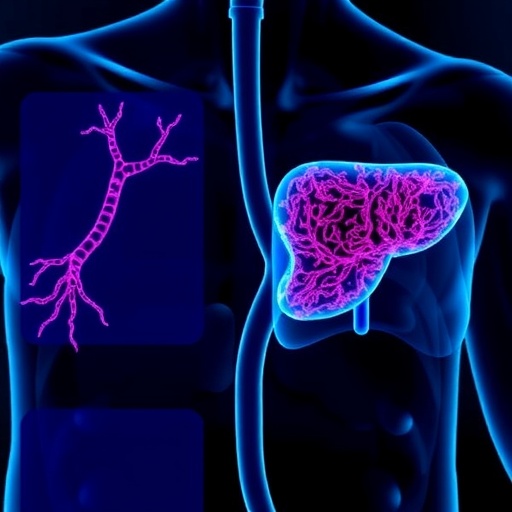Researchers at the University of South Australia and the University of Adelaide have unveiled a groundbreaking biomarker and therapeutic target for ovarian cancer, offering renewed hope for women grappling with this formidable disease. Ovarian cancer, notorious for its lethality and late-stage diagnosis, remains the deadliest gynecological malignancy worldwide. Each year, ovarian cancer claims over 200,000 lives globally, predominantly because most cases are diagnosed only after the cancer has disseminated beyond the ovaries, severely limiting successful treatment options.
The collaborative research, recently published in the International Journal of Molecular Sciences, centers on a cell surface receptor known as F2R (protease-activated receptor 1). This receptor is shown to be markedly overexpressed in ovarian cancer tissues, particularly in patients exhibiting chemotherapy resistance and metastatic disease progression. Unlike current biomarkers such as CA-125, which often lack specificity and sensitivity, F2R presents itself not only as a potential diagnostic marker but also as a promising therapeutic target to tackle drug-resistant ovarian tumors.
Dr. Hugo Albrecht, leading the study from UniSA’s Centre for Pharmaceutical Innovation, emphasizes that F2R’s overexpression correlates strongly with poor prognosis and aggressive tumor behavior. The receptor’s elevated presence in cancer cells appears to facilitate the critical processes involved in metastasis, including enhanced cell motility, invasion capabilities, and the formation of 3D spheroids—structures that underpin tumor spread and survival. These findings underscore the receptor’s functional role in ovarian cancer pathophysiology, making it a candidate for targeted intervention.
The clinical implications of these discoveries are profound. Ovarian cancer diagnosis is notoriously challenging due to the absence of effective screening tools and the nonspecific nature of early symptoms, which often resemble benign gastrointestinal or urinary disorders. Current biochemical markers like CA-125 lack the accuracy required for early detection or efficient monitoring of therapeutic response. By contrast, F2R’s heightened expression in aggressive and chemoresistant tumors offers a new avenue for developing precise diagnostic assays that could identify high-risk patients earlier, potentially transforming clinical outcomes.
The researchers employed robust genomic analyses alongside tissue imaging techniques to validate F2R expression in patient tumor samples. They demonstrated that women with higher levels of F2R had significantly shorter survival spans, reinforcing the receptor’s potential as a prognostic biomarker. Moreover, experimental silencing of the F2R gene in ovarian cancer cell lines dramatically impaired the cells’ invasive properties and their ability to form spheroids, effectively attenuating metastatic potential.
Notably, the investigation revealed that inhibition of F2R sensitizes ovarian cancer cells to carboplatin, a standard chemotherapy agent in ovarian cancer treatment. This finding suggests that targeted F2R therapies could be synergistically employed with existing chemotherapeutic regimens to overcome resistance and improve patient responses. It signals a paradigm shift towards personalized medicine approaches tailored to the molecular profile of each tumor.
Dr. Carmela Ricciardelli of the University of Adelaide’s Robinson Research Institute highlights the transformative potential of these findings: “By integrating F2R testing into clinical practice, we could significantly refine patient stratification, identifying those at risk for early recurrence and chemotherapy failure. This would enable the design of combination therapies that more effectively eradicate resistant cancer cells, ultimately improving survival.”
While these results emerge from preclinical studies, the researchers caution that extensive clinical trials are imperative to validate the efficacy and safety of F2R-targeted diagnostics and treatments. Nonetheless, this discovery breaks new ground in ovarian cancer research, addressing the critical unmet needs of early detection and management of resistant disease forms.
Historically, ovarian cancer has been dubbed the “silent killer” due to the stealthy progression and lack of reliable early detection methods. The identification of F2R as a biomarker and drug target heralds a new chapter in the fight against this devastating cancer, offering promise for significantly improved diagnostic accuracy and therapeutic outcomes.
In conclusion, the unveiling of F2R’s significant role in ovarian cancer pathogenesis and treatment resistance marks an important advance in gynecologic oncology. With ongoing research and eventual clinical translation, this receptor could become a cornerstone in personalized ovarian cancer care, reducing mortality and improving the quality of life for thousands of women globally.
The study, titled “Protease-activated receptor F2R is a potential target for new diagnostic/prognostic and treatment applications for patients with ovarian cancer,” is authored by teams at the University of South Australia, University of Adelaide, and the Royal Adelaide Hospital. This seminal work represents a major leap forward in our understanding of ovarian cancer biology and opens new horizons for combating this silent but deadly disease.
Subject of Research: Cells
Article Title: Protease-activated receptor F2R is a potential target for new diagnostic/prognostic and treatment applications for patients with ovarian cancer
News Publication Date: 2-Sep-2025
Web References: http://dx.doi.org/10.3390/ijms26178529
References: Protease-activated receptor F2R is a potential target for new diagnostic/prognostic and treatment applications for patients with ovarian cancer, International Journal of Molecular Sciences, DOI: 10.3390/ijms26178529
Image Credits: University of South Australia
Keywords: Ovarian cancer, Cancer, Cell pathology, Diseases and disorders
Tags: aggressive tumor behaviorbiomarkers for ovarian cancerchemotherapy resistance in cancerdrug-resistant ovarian tumorsF2R protease-activated receptorInternational Journal of Molecular Scienceslate-stage ovarian cancer diagnosisovarian cancer metastasistherapeutic targets for ovarian cancerUniversity of South Australia researchwomen’s health and cancer research





